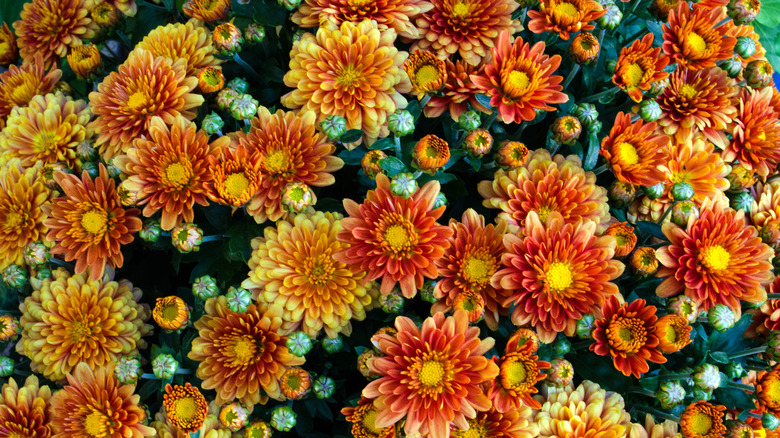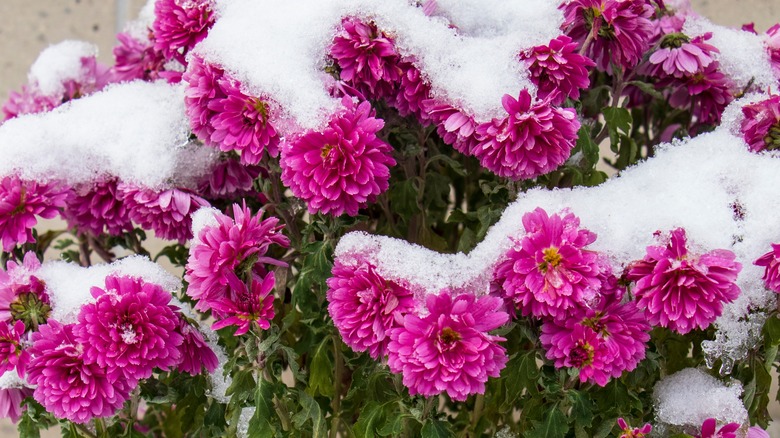Simple Ways To Protect Fall Mums From Frost As Temperatures Drop
Chrysanthemums are a favorite iconic flower of fall. While you may have flocked to the plant nursery to stock up on some for your front porch or property just a few weeks ago, these autumnal blooms' may struggle to survive in the face of the freezing temperatures that are right around the corner. Rather than being deflated by dead blooms and wilted stems on your mums, there are a number of simple tips that can help you provide the care these delicate plants need to thrive in the coming weeks — such strategies include using mulch and fabric. You can also take this time to learn how to propagate your fall flowers if you want to multiply your mums.
There's a lot to love about mums, which are traditionally associated with happiness in the United States, as well as in other countries. Their cheerful colors, however, can only tolerate a low of 32 degrees once overnight temperatures begin to drop, which can be a problem for much of the country. Fortunately, these flowering plants are amenable to a helping hand from their human caregiver so long as you know what they need. Simply put, if you know that temps are dipping to freezing on a given night, you'll need to provide them a buffer from the harsh conditions.
Caring for outdoor mums
Starting with the most challenging scenario, mums that are planted in the ground or a fixed planter will have the most challenging time with winter temps. You may be able to pull off their survival by overwintering them, which involves applying a heavy layer of mulch of your choice around the in-ground plants, providing insulation and protection to the roots so the plants can come back in the spring. If there's no rain in the forecast, water them the night before a freeze. The wet soil helps insulate the roots. Before mulching around the plant, you'll want to trim back any dead stems for the best outcomes. However, it is far easier to protect them from frost by removing them from the elements than overwintering them. You can do this with your in-ground mums by digging them up and transplanting them to a pot, making them easier to care for.
If you're dealing with a potted plant, you'll want to monitor outdoor temperatures and either cover them with a towel or some sheets on below-freezing nights and days or move them into a garage or other indoor shelter. So long as the temperatures outside are no lower than 50 degrees, you can move them back outside to admire, but above all, avoid exposing them to the shock associated with freezing and defrosting repeatedly, which can be very hard on mums. In the event that your mums suffer an untimely demise, there are some tried and true ways that you can try reviving them before they completely die off.

